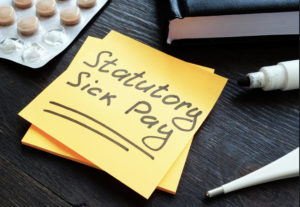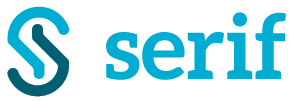Rishi Sunak has recently announced that the government will be reintroducing the Statutory Sick Pay Rebate Scheme (SSPRS), due to the sharp increase in UK COVID cases in recent weeks as businesses face mounting pressures with record numbers of employees isolating.

The announcement will be welcomed by many businesses, as the government has warned that rising COVID cases could see workplaces face absences of up to 25%.
While it’s brilliant news that the government is offering extra financial support to small businesses during difficult times, it does mean that as an HR manager or business leader you need to understand the rebate scheme and ensure you have a stringent system for logging company sickness.
In this blog, to help businesses and HR teams understand the latest changes to the SSPRS, we have broken down all of the essential information that you need to know.
Who’s eligible?
The SSP Rebate Scheme will be a temporary measure to support employers facing heightened levels of sickness absence due to the pandemic this winter. It is estimated that around 1.2 million people were isolating the first week of January due to covid.
Any of those workers that are employed by a small or+ medium-sized employer with fewer than 250 employees will be eligible for the scheme.
They must be UK-based, employ fewer than 250 employees as of 30 November 2021, have had a PAYE payroll system as of 30 November 2021 and have already paid their employees’ COVID-related statutory sick-pay to qualify for eligibility.
The new SSP rebate scheme will apply where the employee has taken sick leave due to Covid-related reasons from 21 December 2021.
How much will employees be paid?
The scheme will refund the employers, COVID-related SSP costs for up to two weeks per individual employee. The current rate for statutory sick pay of £96.35 a week and is paid by employers.
This two-week limit will be reset so an employer will be able to claim up to two weeks per employee regardless of whether they have claimed under the previous scheme.
How long will the new scheme last?
The government has not set a deadline for the scheme to end, but it will be reviewed on an ongoing basis.
Claims on the scheme can be made from mid-January 2022.
Keeping record
Employers and HR managers must maintain records in support of any SSP claim which must also be kept for three years after receipt of a payment under the scheme, and in a format in which they can be provided to HMRC and are as follows:
- the dates the employee was off due to sickness
- which of those dates were qualifying days
- the reason they said they were off work was due to COVID-19 or any other sickness
- the employee’s National Insurance number
Having an updated and organised sickness log for the business will make claiming back through the scheme an easier process.
Requirement for doctors ‘fit’ note changes
The governement also recently made a temporary change to the requirement to provide a doctors note after 7 days absence in a row. Employees must now give their employer a doctor’s ‘fit note’ (sometimes called a ‘sick note’) if they’ve been ill for more than 28 days in a row and have taken sick leave. This includes non-working days, such as weekends and bank holidays. Where the leave started before 10 December 2021, it remains that they must give proof if they’ve been off work for more than 7 days, including non-working days. If employees are self-isolating and cannot work because of coronavirus (COVID-19) they can get an ‘isolation note’ online from NHS 111. They do not have to go to their GP or a hospital.
For additional support and information, the reintroduction of the SSP Rebate Scheme, seek an independent HR advisor for guidance and support.


